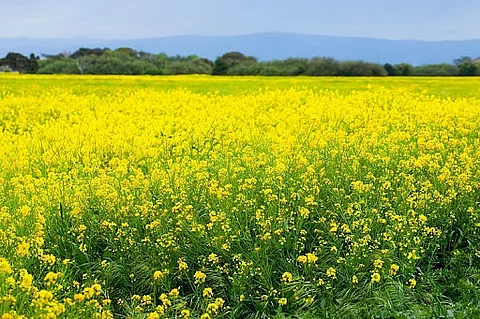
- Home
- Live Blog
- Breaking News
- Top Headlines
- Cities
- NE News
- Sentinel Media
- Sports
- Education
- Jobs

The persisting demand-supply gap of edible oil in Assam, despite the state being endowed with favourable agroclimatic conditions, is reflective of the potential of growing mustard on a commercial scale remaining untapped. The District Mustard Mission announced in the annual state budget for 2025-26 holds promise of bridging the demand-supply gap if the mission is successful in creating enthusiasm among farmers and rural entrepreneurs. The state government supports local Farmer Producer Companies (FPC) under the mission to procure and mill mustard seeds for producing high-quality mustard oil. The mission also envisages each participating district to develop its own district brand mustard oil. The procurement push through FPCs is expected to generate demand for procurement. Farmers will be keen to expand the area under mustard seeds for producing a marketable surplus only when they are assured of procurement and a remunerative price. The FPCs are required to play the crucial role in motivating farmers to grow more by placing their demand well in advance. The state currently can meet only 20% of the market demand of edible oil, and the remaining 80% is procured from outside the state. This also implies that the market is already flooded with different brands of edible oils, including mustard oil from other states, which have gained popularity among consumers. District brands that are to be developed will face stiff competition with brands already positioned in the markets. Local brands have the advantage of consumer sentiment over indigenous production. However, maintaining high quality in production and packaging is crucial for local brands, as a large section of consumers are highly conscious about quality. Uninterrupted supply plays a significant role, as consumers usually prefer to buy the brand of their choice once they have firmed up their opinion about its quality and affordability. Once a local brand of mustard oil is introduced in the markets, the producers ensuring uninterrupted supply is crucial to win the trust and confidence of consumers. Addressing the challenge of high moisture content in mustard produced in Assam is critical to ensure high-quality production of mustard oil. The moisture content in mustard seeds grown in the state is in the high range of 15%-18% against the permissible level of 8% on account of humid climatic conditions. The high moisture content poses a stumbling block in mustard seed procurement by various government and private procurement agencies, which explains reluctance among farmers to scale up production for more marketable surplus. The FPCs will be required to store mustard procured with the support provided to them under the District Mustard Mission, for which reducing moisture content must be prioritised. Drying mustard seeds under the sun can reduce the moisture content to the permissible level. The awareness among farmers about the permissible level of moisture content is essential for quality control right from the farm gate and to ensure a remunerative price for their produce. Handholding support by the Department of Agriculture to the farmers, FPC members, and individual entrepreneurs on post-harvest management for conditioning and processing, packing and storage requires intensive training. Special attention is needed for using the right packing material, such as jute bags, corrugated fibreboard boxes or plastic film bags, to protect the seeds from dirt and moisture. Labelling plays the key role in branding, and consumers often make their first choice when opting for an alternative or a new food brand from the information available on labels. Often the local brands lose out in the competition as producers are not keen on investing in modern packaging and labelling and, as a result, fail to attract the attention of the consumers. Mustard oil cake is an important by-product derived after expelling oil from the seeds. It has high demand as animal feed and bio-pesticide, more particularly as a component in fish feed. Increasing the quantity of marketable surplus of mustard oil seeds and the establishment of more oil mills, therefore, can bring additional benefits of increasing the availability of mustard oil cake for boosting fish production in the state. The District Mustard Mission, therefore, will also create huge potential for developing fish feed brands in addition to mustard oil brands. The FPCs mapping clusters of mustard cultivations, doing meticulous planning of aggregating the marketable plus and having adequate storage space is vital for increasing procurement of mustard seeds. Digital marketing and e-marketing have brought new opportunities for local brands, as local producers of mustard oil need not be dependent on traditional marketing and markets next door. To unlock the potential of boosting mustard seed production and procurement to augment farmers’ income, the mission has to cater to the need in every aspect of brand development along the mustard oil value chain from farm gate to consumer consumption. Pushing the discourse among producers and entrepreneurs about the new opportunities instead of discussing the problems and challenges is important to make the District Mustard Mission a grand success.